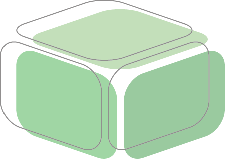 |
FreeWalk/Q

|
Ishida Laboratory (Graduate School of Informatics, Kyoto University) |
| under construction |
The Universal Mobile Interface

|
Ishida Laboratory (Graduate School of Informatics, Kyoto University) |
| The Universal Mobile Interface integrates various media representations of the same real city using audio semantic annotations in connected digital city systems. It is also applicable to mobile use without need to develop a specific mobile interface. |
KyotoSEARCH:
A Concept-based Geographic Web Search Engine

|
Distributed Information Systems Laboratory
(Graduate School of Informatics, Kyoto University) |
| KyotoSEARCH integrates seamlessly three tiers of geographic information: maps, place names and WWW. Users can retrieve relevant information as they come and go through these three tiers. An interactive map interface and a detailed concept navigation interface are the some features of the system. Users can access appropriate WWW contents through the geographic information and concept space's information networks. |
Retrax System:
Video-based Virtual Space Environments

|
Distributed Information Systems Laboratory (Graduate School of Informatics, Kyoto University) |
| The Retrax System records complete views of the activities occurring at some place as omni-directional videos. Users can then gain experience of the past events by walkthroughs, annotation and retrieval in a video-based virtual space. |
The support system for environmental learnig
in the suburbs

|
Sakai Laboratory (Graduate School of Informatics, Kyoto University) |
| This support system consists of two parts. One system supports the direct experience in the natural field using PDA and GPS, the other supports the pre- and post- classroom learning with a virtual space based on the Digital City environment. Integrating these two systems, a new style of environmental learning is put into practice. |
The support system for "The Periods
for Integrated Study" in the elementary
school
-Practice of Inari elementary school in Kyoto-

|
Sakai Laboratory (Graduate School of Informatics, Kyoto University) |
| Under construction |
Town Digitizing

|
Ishiguro Laboratory (Dept. Adaptive Machine Systems, Osaka University) |
| Town Digitizing provides a new method for building photo-realistic virtual worlds. Town Digitizing is simple since we are just taking images at a regular interval with an omnidirectional camera.
The method builds a walk-through virtual space of a town by using zooming stereo which interpolates between omni-directional images. |
Recognition of Human Activities
in a Vision Sensor Network System

|
Ishiguro Laboratory (Dept. Adaptive Machine Systems, Osaka University) |
| This system recognizes human activities in daily life with a sensor network consisting of multiple vision sensors. In this system, we use a memory-based method that does not require any calibration or a priori models. In addition, for reducing computation and increasing classification accuracy, we have developed a method to select what information is necessary to make these discriminations. |
Event Space Information Support Utilizing CoBITs

|
Ubiquitous Interface Group
Information Technology Research Institute (ITRI)
(National Institute of Advanced Industrial Science and Technology (AIST)) |
| This system is a location- and orientation-based information support system using the Compact Battery-less Information Terminal(CoBIT). The CoBIT is a small, low cost communication terminal that uses only energy from the information carrier and the user. We realized an example of CoBIT, which downloads sound information and uploads users' positions and orientations along with signs from users. This system emphasizes the importance of focusing on event space as a first step toward realizing ubiquitous information support. |
CONSORTS: Service Coordination Architecture in Ubiquitous Computing

|
Multiagent Group
Information Technology Research Institute (ITRI)
(National Institute of Advanced Industrial Science and Technology (AIST)) |
| We have been developing CONSORTS (Coordination System of Realworld Transaction Service), a multiagent architecture for coordinating various kinds of services in ubiquitous computing. The services realized by CONSORTS include 1) "situation" based personal supports and 2) "mass" user supports that exploit macro-attributes of mass users |
Semantic Structure-based Search Engine `Kamome'

|
Intelligent Content Group
Information Technology Research Institute (ITRI)
(National Institute of Advanced Industrial Science and Technology (AIST)) |
| Our search engine Kamome uses not a set of keywords but the semantic structures of query and the documents. Since Kamome matches the semantic structure of the query against those of the documents, it can retrieve documents which are more suitable for the query. |
Social network extraction from the Web

|
Intelligent Content Group
Information Technology Research Institute (ITRI)
(National Institute of Advanced Industrial Science and Technology (AIST)) |
| Social relation plays an important role in a real community. We develop a new approach to automatically obtain a social network, especially a collaboration network of researchers, of a community from the Web: Nodes are given beforehand. Edges are added consulting to a Web search engine. If two names co-occurs in a lot of Web documents, we assume these two have a strong relation. Moreover, by analyzing the retrieved documents, edge labels are assigned to edges to represent classes of relations such as co-author, same laboratory, same project, or same conference. Various evaluations are made to show the effectiveness of our approach. We apply this approach to support and promote communication and effective collaboration among researchers. |
 |









